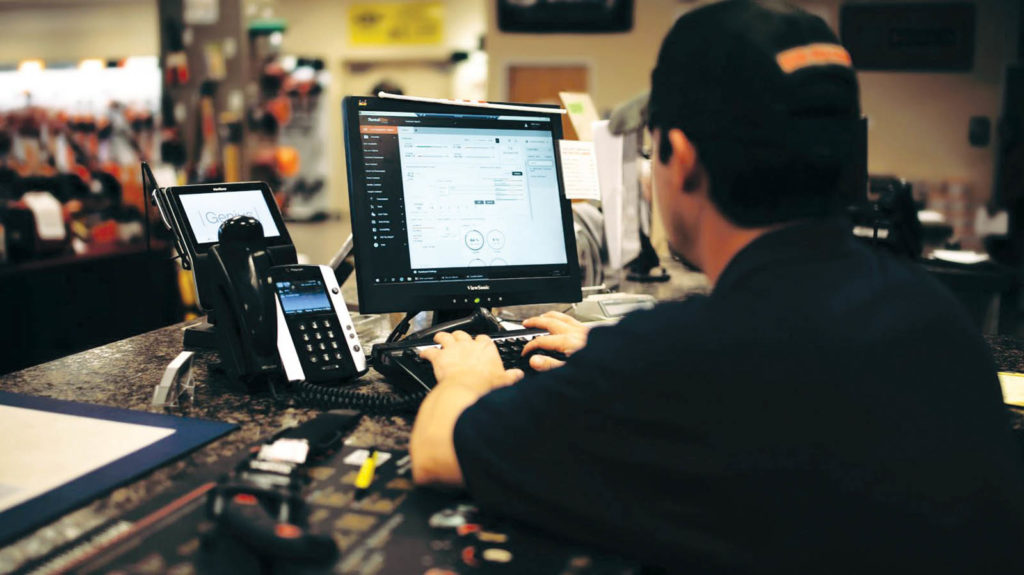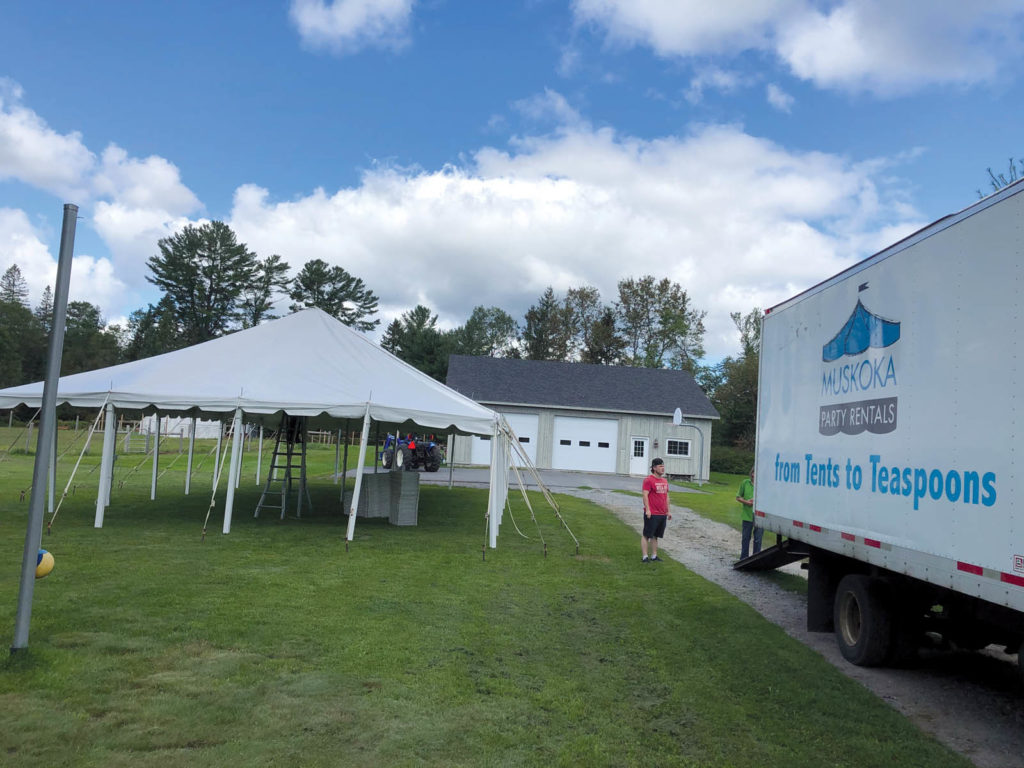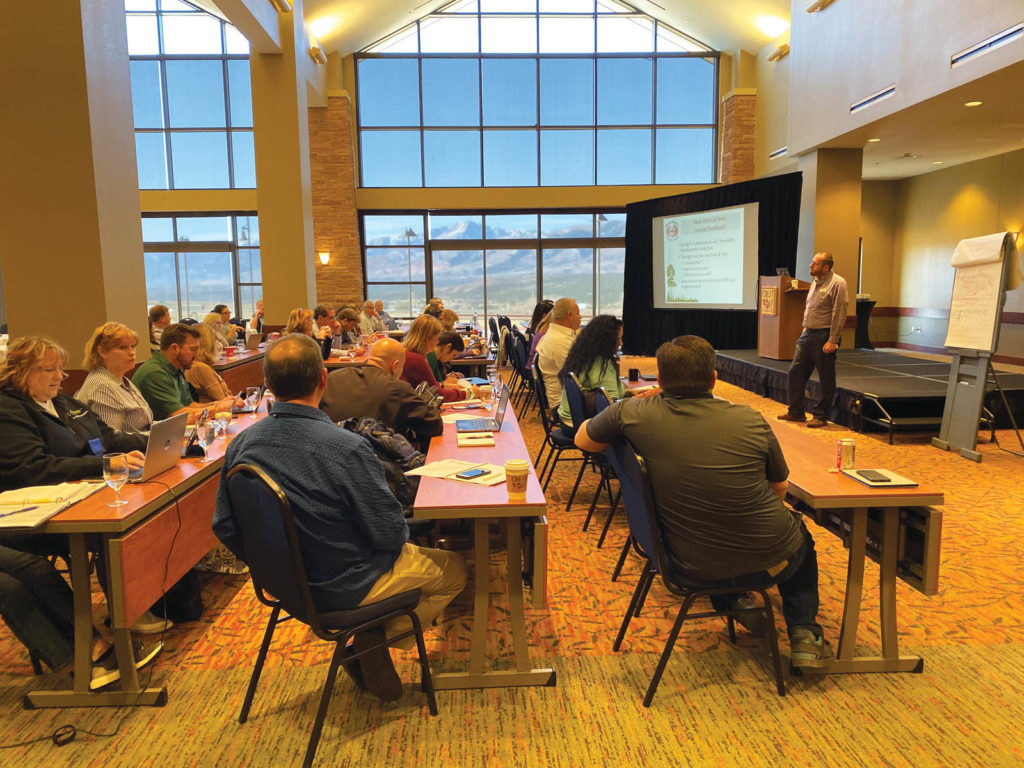As choices grow and features multiply, tent companies have more software options than ever.
by Jeff Moravec
Information is power” when it comes to running the daily operations of an event rentals business, says Jennifer Rodriguez, general manager of Marianne’s Rentals in Oklahoma City, Okla.
However, as Rodriguez clarifies, that’s only true if a company can effectively organize that information.
Some companies are still comfortable handling tasks like tracking inventory and recording invoices the old-fashioned way, with paper ledgers or with computer applications not necessarily meant for those specific tasks. But more and more these days, even small companies are relying on software systems—both cloud- and computer-based—that handle jobs from inventory management to billing and everything in between.
Why now? Efficiency increases competitiveness, and cost of entry
into software systems has become more affordable.
Price is still highly variable. Different rental companies use rental software for different reasons, so it can cost from a few dollars a month for a subscription model to well into six figures for the most sophisticated systems available for purchase.
Rodriguez is no stranger to rental software. She says Marianne’s has used software for about 30 years from Alert Rental, founded in 1976 in Colorado Springs, Colo. “It has changed a little bit since then,” she laughs. “At that time it was DOS-based and we used carbon paper.”
Basic needs
What Rodriguez values about a software system is basic. “It’s very important I keep all my customer data in one place,” she says. “A few years ago we bought a company that had scanned copies of their contracts and saved them in an online file system. I could never find a contract. It was a needle in a haystack.”
“With our system, if I know the name on the account, I can see their history, see what they rented—all the CRM [customer relationship management] stuff you would want to know,” she says.
“One of the first things we hear from most prospective customers is ‘I’ve had it,’” explains Kara Longmire, Alert Rental’s co-president and CEO. “‘I don’t know where any of my stuff is, please help me.’ We’re able to show them, and it makes a lot of heart rates go down.”

It all comes at a cost, of course. Kim Rixon, owner of Muskoka Party Rentals in Bracebridge, Ont., Canada, resisted the tug of rental software for years—not because she didn’t think she needed it, but because it “was very, very expensive,” she says.
Not an uncommon situation, but not always the best approach according to Brian Beaudry, content generator with Point of Rental, the Fort Worth, Texas, company used by Rixon.
“It’s easy to focus on the price tag, not the value that the software brings,” he says. “You’re trusting a rental software to be able to track your inventory, your customers, your prospects, your income; make sure you’re thinking about the future. That means things like asking about their support—are they in-house or outsourced? How many people do they have supporting the product? It means asking about R&D—how many full-time developers are they using? How often is the software getting updated? It means thinking about rental software as a relationship—is my partner going to be around for me as my needs change? Value is what fuels long-term success.”
Subscription models ARE the norm
Like much software these days, from Microsoft Office to Adobe Photoshop, many companies have moved to a subscription model, where the rental company pays a monthly fee for the software (and sometimes other services, such as cloud storage). It allows relatively inexpensive setup, but if you stop paying the monthly fee, it all disappears. Software for purchase is still an option, generally for larger-scale operations that need or want customization, but it, too, may come with a monthly charge.
“People are getting more used to subscription-based software as the norm,” says Karen Gordon, vice president of growth for Goodshuffle Pro, Washington, D.C., which uses the subscription model. “It’s much like how we all sign up for Netflix, and everybody crowdsourcing makes it significantly less expensive. You can actually get a tool that is affordable which is going to have the exact same needs met as 20 years ago when they had to come in and install whole systems in your actual warehouse.

“When it comes to technology, there are two camps of incorrect notions,” she adds. “People think it’s either free, or it costs a million dollars; there’s no in between. So they try to piece together things with free tools. It’s nice to have free tools, but your system won’t be built with the specificity and design and thoughtfulness of an industry-specific tool.”
For example, Jeff Hall, owner of Legacy Events & Rentals near Zion National Park, Utah, likes a specific inventory feature that Goodshuffle Pro offers called “Wishlist,” which integrates his inventory with his website.
“The system creates a beautiful showcase of our inventory and leads to some rentals we might not otherwise get,” Hall says. “Besides event rentals, we also have a separate amusement company and we decided to allow those inventory items to show up in Wishlist on the event rental site. One customer shopping for wedding rentals explored everything in Wishlists and ended up renting the mechanical bull for her wedding. If she had called, we would have filled her order of tables and chairs, but would probably not have discussed mechanical yard games.”

Choosing software
With all of the software options available, how does a rental company make the right decision?
It can be difficult to find the cost of software and/or subscriptions services on the websites of the companies that sell it. Some vendors may be concerned with sticker shock, because the most expensive can surprise those looking into the subject for the first time and can lead to a quick exit from the website. But because most rental software is tailored to each rental company’s needs—very few are totally off-the-shelf and those are very basic—the sellers would prefer to determine a company’s specific requirements before quoting an exact price. Besides, that gives potential buyers a much clearer picture of what they might be getting.
That’s why most companies offering rental software offer demo versions, which give potential buyers a much clearer picture of what they might be getting into and how much it’s going to cost. Just as importantly though, it can give customers an idea of how responsive the company is, and how easy or difficult the software is to use. “I am not tech-savvy at all,” says Rixon. “So I need something that was super easy to use.”

Beaudry prefers a different perspective: “I want to compare rental software to cheeseburgers for this, because I’m a big fan of both. Regardless of where you go to grab a cheeseburger, you’re generally going to get a bun, cheese and a beef patty, and even a bad one tastes better than nothing. Depending on what you value—price, location, flavor, etc.—you’ll prefer one cheeseburger or another.
“The same goes for rental software,” he says. “Regardless of who you go with, you’re generally going to get the same basic features. But the comparison stops there because rental software is a much deeper, longer-lasting product than a burger. You’re buying one rental software, hopefully, for the rest of your time running a business. That means you’re valuing things like scalability, innovation, reliability, relationship, etc. And those are the values rental software companies are largely competing on. It’s not just about handling the basics; it’s about providing both the best version of the basics and an overall great experience.”
Jeff Moravec is a freelance writer based in Brooklyn Park, Minn.
SIDEBAR: Cloud control
Many people use a radio frequency identification—RFID—system in their personal lives without even knowing the term. Do you have a Tile to keep track of keys or a phone? If so, you’re using RFID, which uses electromagnetic fields to identify and track tags affixed to various objects.
Darren Morizet has owned a rental company for 20 years in Poughquag, N.Y., but just last year started Easy RFID Pro, believing that RFID is the best way for rental companies to keep track of their inventory. “We couldn’t find anything else in the market that was reasonably priced that was going to solve the problems that my rental company had,” he explains. “So that’s how Easy RFID Pro was born. We we solved our own problems and knew we could help others having the same problems.”
According to Morizet, the system works by applying tags to inventory items and then using a handheld scanner to record outgoing and incoming assets. The information is then available via the cloud on any computer or phone with the right software.
“I no longer need to unroll the top of a tent to get details about it,” he says. “I know what customer it went to last, I know how many times that top was washed, I know right now if it’s dirty, if it’s wet, or if it needs a repair.”
RFID systems have been around for years, but not at a price point that most rental companies could afford. “These custom systems were complicated and in general were somewhere between a quarter to a half million dollars or more, so you had to have a pretty sizable operation to even want to consider it,” he says. “With Easy RFID Pro, for example, you can get into a system for less than $10,000.”
SIDEBAR: Serving users

Alert Rental, a Colorado Springs, Colo., rental software company, believes that users drive its offerings, and to foster that, it has hosted an annual users conference for the past 40 years.
“Their sole focus is service, ‘How do you need us to evolve to better support your company?’” says Jennifer Rodriguez, general manager of Marianne’s Rentals in Oklahoma City, Okla., one of Alert’s longtime customers. “At the conference, you can get training, join committees, and talk with owners and support staff, as well as programmers.”
Part of the attraction to Rodriguez is that users get to vote on what features they want in the next couple of revisions. “You get to know what’s coming around the corner and have a voice. That’s very unique.”




Leave A Comment